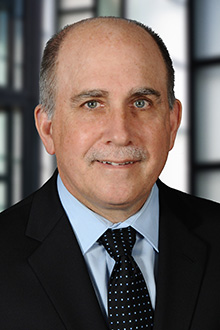Adamo v. Fire Insurance Exchange
In Adamo v. Fire Ins. Exch., 219 Cal.App.4th 1286 (September 24, 2013), the California Fourth District Court of Appeal affirmed the trial court’s entry of judgment in favor of Fire Insurance Exchange (“FIE”) in connection with a first party fire property loss arising under a homeowners policy issued by FIE to Adamo. The parties’ dispute arose when Adamo filed a claim under his homeowners’ policy after a wildfire damaged his 1,000-tree avocado grove, 10,000 gallon water tank, irrigation system, culverts, two woodsheds and landscaping on his property. FIE denied coverage for his avocado trees under a commercial use/farming exclusion, but paid him $116,000 for various damages including the policy’s $53,100 policy limit under Coverage B for “other structures.” Thereafter, Adamo filed an action against FIE contending that he was entitled to additional benefits for damages to the 10,000 gallon water tank, irrigation system and culverts associated with his avocado growing operation under: (1) Coverage A for structures that are “attached” to his dwelling; (2) Subsection 1 of “other structures” which included “other structures” or (3) Under Coverage A for building equipment and outdoor equipment used for the service of and located at the described location.”
Finding for FIE, the trial court held that the water tank, piping and other property were not attached to Coverage A such that Adamo was only entitled to the payment of limits under Coverage B for “other structures.” The trial court rejected Adamo’s argument that the damaged property was covered under Coverage A which afforded coverage for the dwelling on such property.
The Court of Appeal described Coverage A and Coverage B under the FIE policy as follows:
Coverage A applies to four sub-categories, all related to or including the dwelling: (a) “the dwelling on the Described Location, used principally for dwelling purposes"; (b) "structures attached to the dwelling"; (c) "materials and supplies on or adjacent to the Described Location for use in the construction, alteration or repair of the dwelling or other structures on this location”; and (d) “if not otherwise covered in this policy, building equipment and outdoor equipment used for the service of and located on the Described Location.”
Coverage B applies to “other structures on the Described Location, separated from the dwelling by clear space.” Specific examples of structures that fall under Coverage B include those “connected to the dwelling by only a fence, utility line or similar connection.” The policy excludes “other structures” that would otherwise fall under Coverage B when “used in whole or in part for commercial, manufacturing or farming purposes.”
Coverage A and Coverage B have different coverage limits and sub-limits. Coverage A has a $531,000 total liability limit. It also has a $26,500 sub-limit, covering fire or smoke damage to “lawns, plants, shrubs, or trees.” A payment under this sub-limit reduces the “Coverage A limit of liability” for the “dwelling” “by the amount paid.”
Coverage B for “other structures” has a lower $53,100 limit, which is defined under the heading “Other Coverages” in subsection 1: "Other Structures—You may use up to 10% of the Coverage A limit of liability for loss by a Peril Insured Against other structures described in Coverage B. Use of this coverage does not reduce the Coverage A limit of liability for the same loss." The declarations page shows a $531,000 policy limit for Coverage A and a $53,100 policy limit for Coverage B.
In affirming the trial court’s decision referring to the language in the FIE policy, the Court of Appeal held as follows:
The $53,100 coverage for “other structures” was the only coverage available for Adamo's water system. Coverage B for "other structures" applies to the 10,000-gallon water tank, irrigation system and culverts because Coverage B defines “other structures” as those “separated from the dwelling by clear space.” Although the policy does not define the phrase “clear space” it has a plain meaning based on common understanding. It refers to an open area.
Moreover, Coverage B's definition also contains a non-exhaustive list of “other structures” that it covers, including structures, like the water tank, connected to the dwelling only by a “utility line or similar connection.” Adamo concedes that the water tank is “only connected to the dwelling by a water pipe.” Various statutes in this state define “utility service” as including water service. (See Civ. Code, § 1001; Pub. Util. Code §§ 12819.5, 16480.5; Pen. Code, § 498.)
Adamo contends, however, that there is some ambiguity in the language used in Coverage B because the terms "clear space" and "utility line" are undefined. This contention is unavailing. The lack of a policy definition for every word used does not create ambiguity where none otherwise exists. (Bay Cities Paving & Grading, Inc. v. Lawyers' Mutual Ins. Co. (1993) 5 Ca1.4th 854, 866.) The terms "clear space" and "utility line" have common sense meanings. Further, even if the water pipe somehow was not a “utility line,” it is a “similar connection,” that would still keep it within Coverage B's coverage.
The Court of Appeal also rejected Adamo’s argument that he was entitled to an additional payment beyond the limits afforded for “other structures” under Coverage A which afforded limits of $531,000. The Court of Appeal reasoned as follows:
In the policy at issue here, the plain language and physical relationship between Coverage A and Coverage B dictate that the two coverages are mutually exclusive, not compounded. Coverage B for “other structures” immediately follows Coverage A for the “dwelling.” In addition, “other structures” are defined in relationship to the “dwelling.” They must be “separated from the dwelling by clear space" to qualify. Property is covered under either Coverage A or B, not both. Structures Covered under Coverage B are structures “other” than, and distinct from, those covered under Coverage A. (See Black's Law Dict. (6th ed. 1990) p. 1101, col. 1 [defining “Other” as “Different or distinct from that already mentioned”.)
